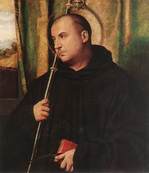This morning on my train ride into the City, I was reading a monograph by Archabbot Lambert Reilly, OSB, the emeritus archabbot of St Meinrad Archabbey, “Prayer: A Conversation with God.” I recommend it. Why? Because I need to be reminded that prayer is not a monologue but a dialogue; it is the heart speaking to the Heart. I also have to remember it is not about me exclusively but about Him who is greater than I.
Tag: Benedictine Oblate
Saint Henry: Benedictine Oblate and patron of sovereign leaders
 The Church recalls the witness of an emperor and a Benedictine Oblate, Saint Henry (972-1024), Duke of Bavaria. Henry was crowned king in Rome by Pope Benedict VIII in 1014. It is said that Henry was assisted by the saints throughout his life but especially at Mass when he was anointed king. He was an insightful leader, lay man who had concern for the discipline of the Church and who had love for the Benedictine monastic life. He was a supporter of Cluny’s reforms. It was through Saint Henry that the King of Hungary and later saint, Stephen, met Christ and was baptized.
The Church recalls the witness of an emperor and a Benedictine Oblate, Saint Henry (972-1024), Duke of Bavaria. Henry was crowned king in Rome by Pope Benedict VIII in 1014. It is said that Henry was assisted by the saints throughout his life but especially at Mass when he was anointed king. He was an insightful leader, lay man who had concern for the discipline of the Church and who had love for the Benedictine monastic life. He was a supporter of Cluny’s reforms. It was through Saint Henry that the King of Hungary and later saint, Stephen, met Christ and was baptized.
Saints Maurus and Placid
 O God, you have filled us with wonder by the example of monastic observance in the lives of your blessed confessors Maurus and Placid. As we celebrate their memory and follow in their footsteps, may we come to share in their reward.
O God, you have filled us with wonder by the example of monastic observance in the lives of your blessed confessors Maurus and Placid. As we celebrate their memory and follow in their footsteps, may we come to share in their reward.
What we know of these saints we know from Saint Gregory the Great
 who introduces them in his Life of Saint Benedict. These early companions of Saint Benedict are what you may call the first Benedictine oblates, ones who made an offering of themselves to God’s service. In time they lived their monastic life fully and without reservation.
who introduces them in his Life of Saint Benedict. These early companions of Saint Benedict are what you may call the first Benedictine oblates, ones who made an offering of themselves to God’s service. In time they lived their monastic life fully and without reservation.
On the life of Saint Maur.
